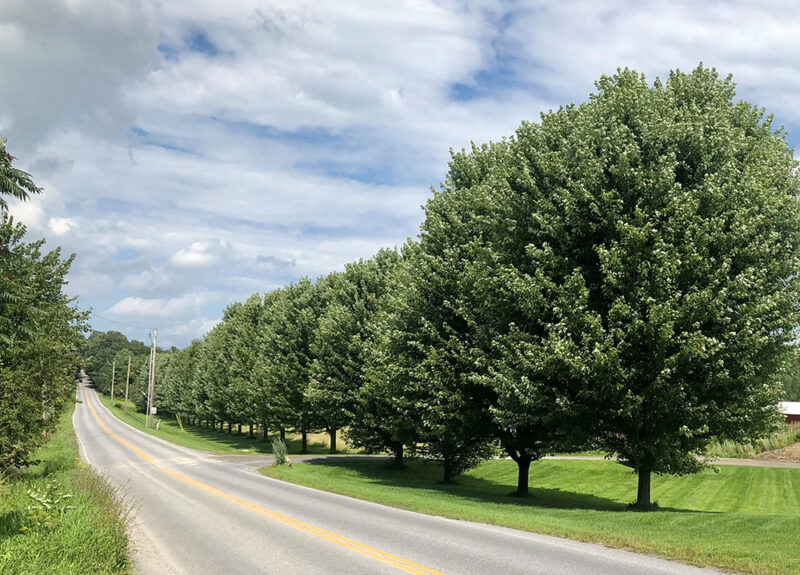Town looks to shine a light on shade
As our selectboard considers the draft Shade Tree Preservation Plan for Charlotte, a first logical question for many people might be: “What is a ‘shade tree’?”

Maple trees shedding cooling shade at Steve Denton’s property on Spear Street.
The term appears in the original state legislation dating back to the 1920s that defined the role and responsibilities of town tree wardens. It refers to the role of trees as providers of shade on town greens and along town roads.
Before the advent of air conditioners, it was important for people, particularly in summer, to have places to gather where they would be protected from the heat and glare of the sun. In an era where much transportation was still powered by draft animals, having shaded roads was desirable because it helped alleviate sun fatigue for these creatures and their human drivers.
But what does shade tree mean in our modern era? The former and current state legislation addressing tree wardens stipulate that removal of shade trees on town property and town rights of way requires permission of the tree warden.
Prior to the end of 2020 what constituted a shade tree, however, was left to the towns to figure out. Charlotte, like many other towns, interpreted the term to apply to all trees since all trees provide shade.
Some towns adopted a more limited definition of shade trees. The new legislation passed just under three years ago clarifies that shade trees include only trees on public property and public rights of way that are planted by the municipality. At the same time, the new legislation enables towns to expand these limited protections, which brings us to our proposed Shade Tree Preservation Plan.
The draft plan restores the traditional protections for all trees on town land and along town roads. It also clarifies rules for circumstances under which tree removals would be allowed. Beyond that, the Shade Tree Preservation Plan defines a citizen-driven program and process for the planting and maintenance of trees in public spaces and public ways.
We care about protecting our public trees for a variety of utilitarian, environmental and aesthetic reasons. Particularly after the recent catastrophic flooding in our state, we may appreciate the role of roadside trees in enhancing water infiltration and mitigating flood impacts.
This happens because leaf canopies can reduce erosion from rain and root systems can absorb water and help soil to better soak up runoff. Shaded dirt roads help retain moisture which makes it easier and less expensive for our road commissioner to maintain the non-paved portion of Charlotte’s thoroughfares.
If the understory is well vegetated, wooded roadsides can create windbreaks to prevent snow drift. Treed roadsides provide habitat and corridors for wildlife; they sequester carbon, improve air quality and moderate temperatures. Cooler roads are no longer needed to protect draft animals, but are appreciated by horse riders, joggers, hikers and bicyclists in the increasingly hot summers.
From late fall to early spring, deciduous trees obligingly shed their leaves to allow warming sun rays to penetrate to roadsides. Besides these practical benefits, trees make our town more beautiful.
In the near future, our selectboard will review and consider for approval the current draft Shade Tree Preservation Plan, but first there will be a public hearing to air views on the plan on Sept. 12, 7-8:30 p.m. All interested members of the Charlotte public are invited and encouraged to attend.
For more info, see the tree warden section of the town website, see the plan or see an explanation of the plan.

